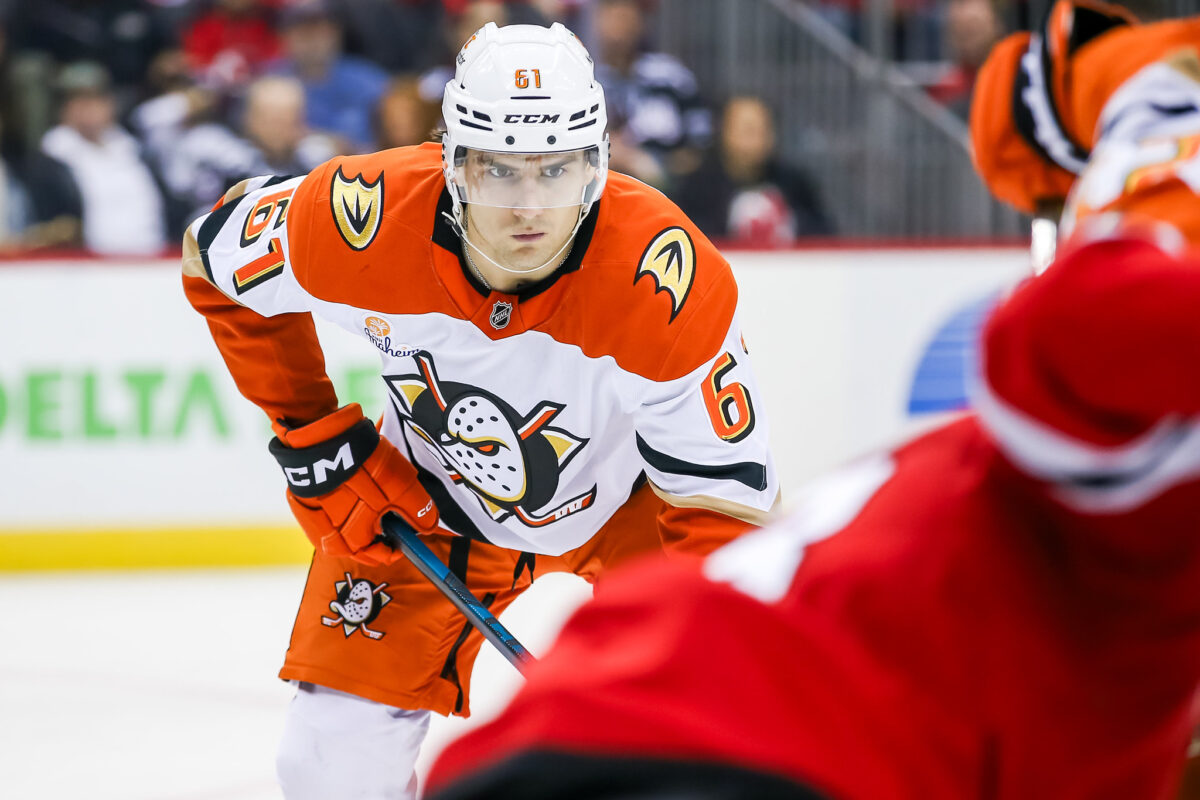The Anaheim Ducks are only 15 games into the 2024-25 season, but their offensive production has been disappointing. Expectations are low for the rebuilding Ducks, but two or fewer goals in nine games is the most significant contributing factor to their 5-7-2 record. Sunday night’s (Nov. 10) offensive explosion in a 4-2 victory against the Columbus Blue Jackets is only the second time the club has scored four regulation goals and is the team’s second-highest scoring output behind their 5-4 overtime win against the Utah Hockey Club on Oct. 16.
Related: Ducks’ Inability to Score Painfully Obvious in Loss to Canucks
Here are some of the numbers behind Anaheim’s horrible offensive start. While some of them suggest poor luck and an eventual bounce-back, others reveal systemic problems that put into question the coaching staff’s usage of their offensive weapons.
Goals per Game: 2.21 (32nd in the NHL)
The Ducks have had among the worst scoring offenses in each of the last three seasons, and this season’s start has been no different. Through 14 contests, Anaheim’s 31 goals are not only a league-low, it’s nearly half of the Vegas Golden Knights’ 62 goals in as many games.
Leo Carlsson and Troy Terry are tied for the team lead with five goals each, but beyond those two the scoring distribution quickly dissipates. After a career year, Frank Vatrano has only recorded one goal. The younger core hasn’t been much more productive. Mason McTavish, Olen Zellweger, and Pavel Mintyukov have two goals apiece. Trevor Zegras has only notched one goal. Cutter Gauthier has still yet to find the back of the net in the NHL.

Underlying numbers at five-on-five paint a grim picture for the Ducks. Their expected goals-for percentage (xGF%) is a league-low 42.25, while their 117 high-danger chances rank 26th. The data backs up the eye test — Anaheim doesn’t generate many chances and those chances are rarely threatening.
Shooting Percentage: 7.9% (Tied for 30th)
In a three-way tie with the New York Islanders and Nashville Predators, Anaheim’s 7.9% shooting percentage is the lowest figure in the league. In some regards, this has been poor luck, but there was some expected regression. Vatrano’s 37-goal breakout last season was fueled by a career-high 13.6% shooting percentage and 100 more shots (272) than his next-closest teammate (Terry, 172). He’s leading the team with 40 shots on goal this season, but his lone goal has him shooting at a 2.5% clip.
Gauthier is goalless despite 35 shots on goal and a team-leading 94 shot attempts, but his 3.06 individual expected goals (ixG) at five-on-five leads the team. The lack of scoring output from a focal point of the offense is troubling, but he’s doing the work, and goals will come. Demoting him to the fourth line isn’t a permanent solution, though he did record a primary assist on Brett Leason’s goal on Sunday against the Blue Jackets.
Teams average over three goals a game in the NHL, so the Ducks would need to consistently put up around 40 shots per game at their current shooting percentage just to stay competitive most nights. Instead, they average closer to 28 per game. At a league average 10.7 shooting percentage, they’d be nearly exactly at that three-goals-per-game threshold.
Power Play: 12.5% (Tied for 29th)
A good power play can mask deficiencies at five-on-five, but Anaheim’s man advantage would never be mistaken for a weapon. Not only are their six power-play goals the second-lowest total in the league but there are several ways to diminish their few accomplishments. Two power-play goals came in the same game against the New York Islanders’ 30th-ranked penalty kill, while three of the other four came against the San Jose Sharks and Chicago Blackhawks.
This shouldn’t be a personnel issue, as their top-flight talent leads in ice time. Despite recording the fifth-most power play minutes in the league, the Ducks have put up a 23rd-ranked 26 high-danger chances. There were bound to be growing pains under new assistant coach Rich Clune’s system, and the tinkering is ongoing. Vatrano was moved to the bumper on the top unit on Sunday with McTavish out of the lineup and the group registered seven scoring chances and two high-danger chances in 2:37 of ice time.
Cronin Should Be Getting More Out of Players
The Ducks have become a much more responsible two-way team since Greg Cronin was hired before the 2023-24 season. While generating offense in the Dallas Eakins era was difficult due to the amount of time spent in the defensive zone, players simply appear uncomfortable in Cronin’s offensive structure. Zegras rarely shows the creativity that makes him such a gifted playmaker. McTavish’s production has suffered and has continued to take bad penalties while being demoted to the fourth line before his injury. Even if Cronin has the Ducks playing a more responsible game, it’s not showing on the scoreboard and it won’t be how the team reaches its potential with its roster makeup anyway.
While they weren’t expected to be playoff contenders, Anaheim was expected to take a step forward. NHL coaching leashes are notoriously thin — Cronin being in the top half of the longest-tenured coaches list in less than two seasons is evidence. If the offense doesn’t improve, he could be the first coach fired this season.
Statistics courtesy of Hockey-Reference. Advanced data courtesy of Natural Stat Trick.
